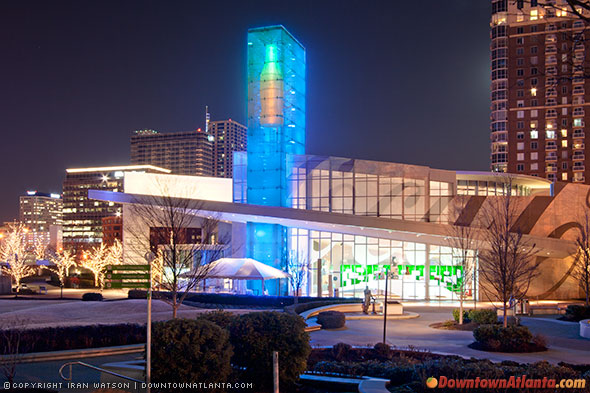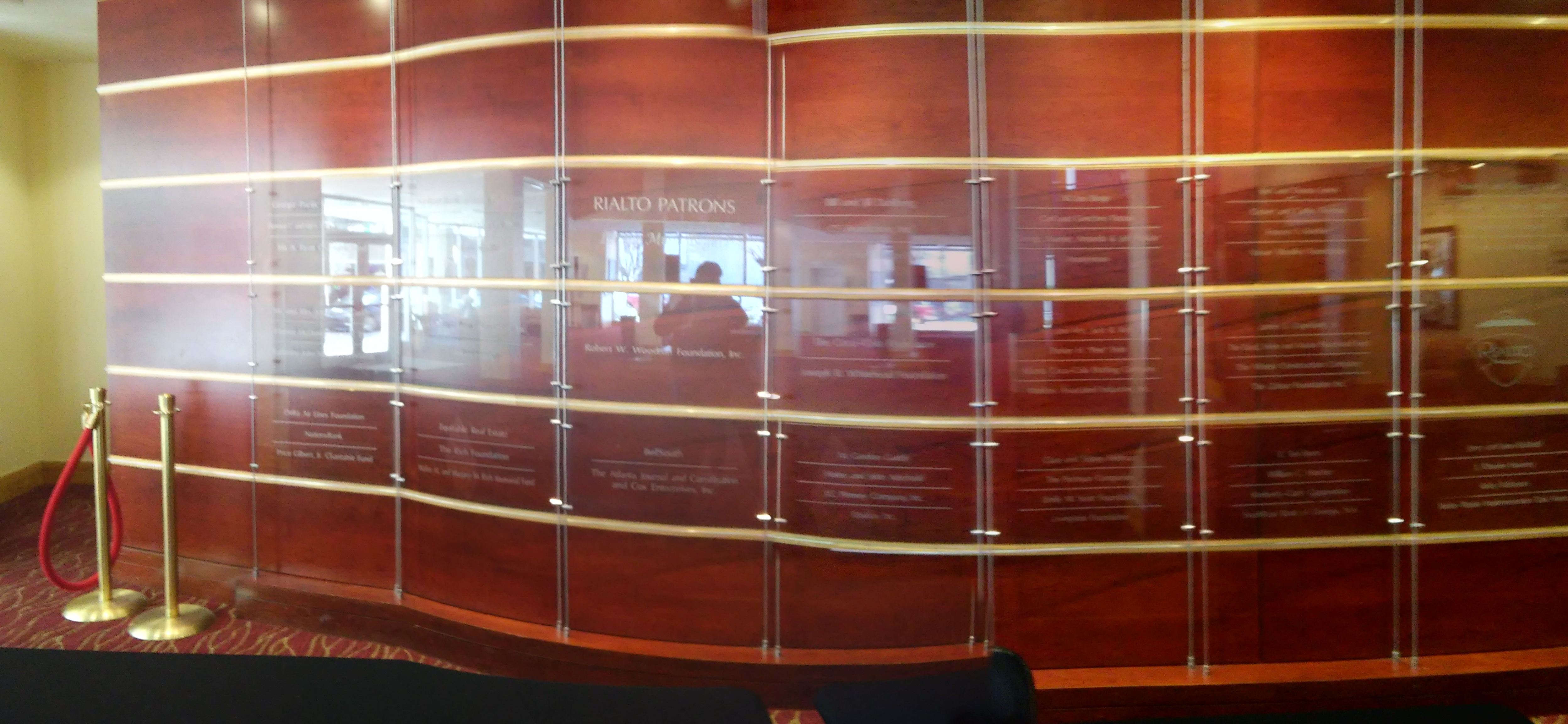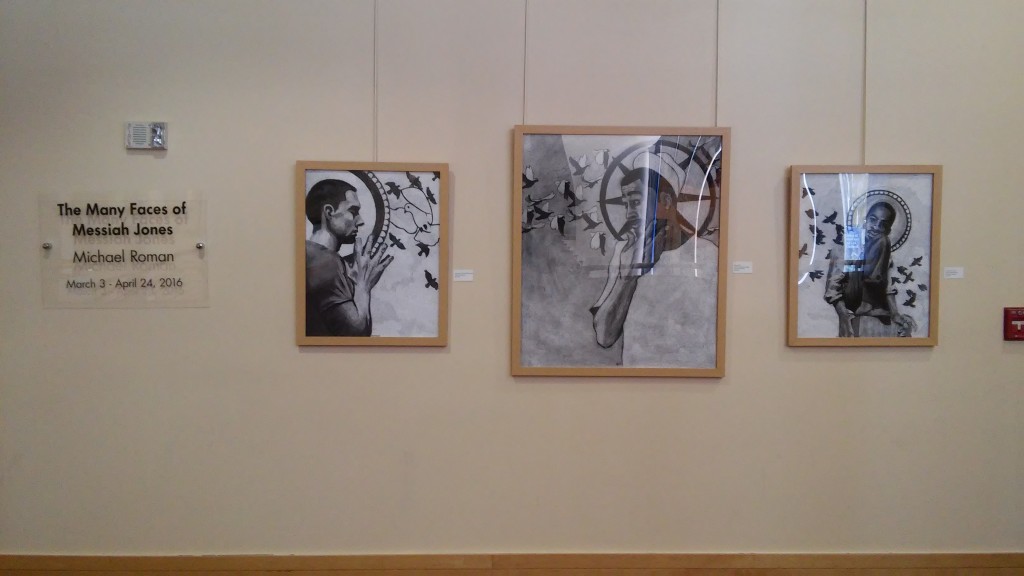Annotated Bibliography 10: Famous Places in Atlanta

From downtownatlanta.com
Gailliard, Ticara. “Famous Places in Atlanta, GA.” Traveltips.usatoday.com. Demand Media, n.d. Web. 28 Mar. 2016.
In this article, “Famous Places in Atlanta, GA”, Ticara Gailliard discusses some of the main attractions in Atlanta. She names some of the most famous places in Atlanta, such as the Georgia Aquarium, World of Coca-Cola, the CNN Center, and the Martin Luther King Jr, National Historic Site. She also provides a brief summary of each place and what it offers. Below the article, there are links to buy tickets, get coupons, and see special offers for the sites she named in the article. The intended audience for this is tourists and it was written with the purpose of informing them about the different places they could go to when they visit the city of Atlanta. Based on the places being advertised in the article, the intended audience could be families. This article would be useful to someone doing research on how the built environment of Atlanta is advertised and what parts are shown to outsiders in different states. It would also be useful to someone looking for activities to do while visiting Atlanta. Also, someone could compare this article to the previous article called “Why Atlanta Is The Big American City You’ve Been Missing Out On” and see how they are different and alike in the representation of Atlanta, based on the style of the article and the places being advertised in each article.
Annotated Bibliography 9: “The Big American City”

Photo by Barry Williams via Getty Images
Ledbetter, Carly. “Why Atlanta Is The Big American City You’ve Been Missing Out On.” The Huffington Post. TheHuffingtonPost.com, 5 Apr. 2014. Web. 28 Mar. 2016.
In her article, “Why Atlanta Is The Big American City You’ve Been Missing Out On“, Carly Ledbetter, from Huffington Post, argues that Atlanta is “one of the most amazing cities in America”. She starts off by addressing some misconceptions that people may have when they think of this city and then she quickly dismisses them. Then rest of the article is her list of twenty things about Atlanta that make it an “amazing city”. These include things like the tourist attractions, popular restaurants, art, music, the sports team, and historical landmarks. She also provides a graphic of some sort for each reason on the list, whether it is a picture or a GIF. The intended audience for this article could be someone that has never been to Atlanta, tourists, and potential residents of Atlanta. Based on most of the reasons she provided, the intended audience could also be for people in the 15-25 age group. Her purpose is to inform, but also persuade someone that has never been Atlanta to come. This would be a helpful resource for someone that is doing research on how the city of Atlanta is portrayed and advertised in a digital built environment and what biases there are towards the city.
Annotated Bibliography 8 : “Stars Flock to Atlanta”

Panoramic from carrollmorgan.com
Severson, Kim. “Stars Flock to Atlanta, Reshaping a Center of Black Culture.” Nytimes.com. The New York Times Company, 25 Nov. 2011. Web. 27 Mar. 2016.
In her article “Stars Flock to Atlanta, Reshaping a Center of Black Culture”, Kim Severson, from The New York Times, claims that Atlanta “is emerging as an epicenter of the black glitterati”. To support her claim she begins with talking about the Soul Train Awards being hosted in the Fox Theater and how “a few years ago, the city probably would not have been able to pull off such a show”. She provides statements from Stephen Hill, an executive vice President for BET where he gives his opinion of Atlanta. He says that ” it’s so ripe with African American flavor and talent”. He also says “Atlanta is home to our core audience” and “Atlanta is our New York, our LA”.
Then Severson gives examples of successful black people in the industry who have homes or business in Atlanta such ass, Tyler Perry, Sean Combs, Ce L Green, Ludacris, and Gladys Knight.
She explains the Entertainment Industry Investment Act passed in 2008, “which gives qualified productions a 20 percent tax break” and “producers who embed the Georgia promotional logo in the titles or credits can take another 10 percent off the tax bill”.
Next, she discusses the “decade of migration of black [stars] from the North”. Some of the reasons behind this is cheaper living and lower production costs. Severson provides a statement from Warrington Hudlin, president of the Black Filmmaker Foundation in New York, where he claims that” Atlanta is becoming the black Hollywood” and that “because many black filmmakers are working on tighter budgets than white filmmakers, they need to save money and Georgia helps them do that”. Another benefit of them living in Atlanta is less paparazzi.
The intended audience for this article is people in the film industry. The purpose of her article is to convince them to consider Atlanta as a place to conduct their businesses and do movies in this city .It is also to inform them of some of the pros of living in Atlanta as a person in the film, television and entertainment industry.
This would be a helpful source for someone doing research on how the built environment of Atlanta influences certain races to live there based on the types of careers that they have and how much they are willing to spend to live here.
Annotated Bibliography 7: “Atlanta is the new Hollywood”
Moore, Christine. ““Atlanta Is the New Hollywood”: Influx of Film and TV Production Boosts Economy, Attracts Actors.” ArtsATL.com. N.p., 04 June 2013. Web. 27 Mar. 2016.
In her article, “Atlanta is the new Hollywood : Influx of film and TV production boosts economy, attracts actors”, Christine Moore, claims that Atlanta’s film industry is growing and becoming the new Hollywood.
She starts by giving a little bit of background about the careers of, Scott Poythress and Claire Bronson, two actors that are from the Atlanta area. She states that back in 2007, they moved from Decatur to Los Angles “in pursuit of more auditions, better roles, and bigger opportunities”. Two years later they moved back to the “metro Atlanta” area, and Moore tells why. She discusses how Atlanta became more inviting to people in the film and media production industry, due to the “well-publicized tax credits that Georgia started offering in 2008”. Then she explains how the tax credit works. When “movie, television, and digital entertainment companies” work and hire within the state of Georgia, they “can receive up to 30 percent in tax breaks “. She continues her article by discussing some of the “new local studios slated for construction” and “new major production facilities” in Atlanta. They include, “a 400,000-square-foot complex in Gwinnett County with 12 sound stages, to be built by Jacoby Development, and a 288-acre development in Fayette County by Pinewood Shepperton, the British studio that’s home to the James Bond franchise”.
Then she goes into talking about how the economy has benefited from the new facilities. According to the Georgia Film, Music & Digital Entertainment Office, “Georgia-based productions generated $3.1 billion for the state economy in fiscal 2012, up 29 percent from the year before”. She also talks about how Atlanta-based actors are benefited, because they do not have to leave town for work.
The intended audience for this article could be actors, film production companies, aspiring actors, film students, and anyone else in the film industry. This article will be helpful to someone doing research on the how the built environment of Atlanta affects the entertainment industry or how it benefits the economy. It could be useful to a film student in Atlanta with concerns about finding work after college or an aspiring actor in Atlanta who is trying to decide if they should relocate or stay in Atlanta.
Camaraderie Display in the Rialto Center
 This display is not visible when you first walk into the lobby. It is located near the restrooms. When you first walk in, you have to go towards the back where the sign for the restrooms are and turn left. This is Johnny Mercer and Friends. The small words beside the picture of man with the microphone give more information about the history behind the people in the display.
This display is not visible when you first walk into the lobby. It is located near the restrooms. When you first walk in, you have to go towards the back where the sign for the restrooms are and turn left. This is Johnny Mercer and Friends. The small words beside the picture of man with the microphone give more information about the history behind the people in the display.
Rialto Patrons
 This wall is located in the front of the lobby. When you first walk into the lobby, it is on the right. This is the Rialto Patrons. They are the ones that donated to the Rialto center. Some of the panels on the wall have only one name and some have more than one. The names by themselves are bigger patrons, like the Robert W. Woodruff Foundation.
This wall is located in the front of the lobby. When you first walk into the lobby, it is on the right. This is the Rialto Patrons. They are the ones that donated to the Rialto center. Some of the panels on the wall have only one name and some have more than one. The names by themselves are bigger patrons, like the Robert W. Woodruff Foundation.
Rialto Lobby Music
This is the music that was playing in the Lobby of the Rialto Center. It sounds like Jazz music. It was easy to hear because there was not many people in the lobby when I recorded it. There were only three people there and they were not really talkning so the recording does not have much background noise, just the music.




